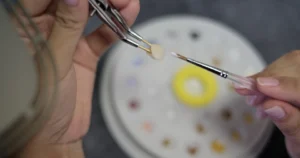Table of Contents
When a tooth becomes infected or severely damaged, patients often face two choices: remove the tooth entirely or save it through root canal therapy. Because of outdated assumptions, many people still feel nervous about root canals. In reality, modern techniques have made them more comfortable and dependable, helping relieve pain rather than cause it.
More individuals are discovering the importance of preserving natural teeth whenever possible. While extraction may seem like the faster solution, it can lead to long-term challenges such as shifting teeth, changes in bite, and the need for future restorative treatments. Root canal therapy addresses infection directly, protects the natural tooth, and restores its function. At the Luth & Heideman Center for Dental Care, patients can receive gentle root canal therapy in Las Vegas, NV, guided by a team focused on comfort and long-term oral health. If you’re comparing your options, this guide explains how saving your natural tooth can support your comfort, smile, and future dental wellness.
Why Saving Natural Teeth Matters
Natural teeth are designed to last. Each part of the enamel, dentin, pulp, and roots plays a role in helping you chew, speak, and maintain jaw health. Once a tooth is removed, nothing can replace its biological connection to the jawbone. That’s why dentists often recommend root canal therapy when a tooth is still salvageable.
Root canal treatment clears infection from inside the tooth, removes harmful bacteria, and restores the structure with a durable crown. This helps preserve your natural bite, appearance, and day-to-day comfort.
1. Root Canal Therapy Helps Preserve Your Natural Smile
The most meaningful benefit of root canal therapy is that it saves your natural tooth. While there are excellent solutions to replace extracted teeth, like implants or a bridge, nothing compares to keeping the real thing.
When the tooth remains in place, it continues to support the surrounding bone and neighboring teeth. This prevents problems such as:
- Shifting teeth
- Gaps
- Bite imbalance
- Jawbone changes
Root canal treatment allows your original tooth to remain healthy and functional. Even though it receives a protective crown afterward, the natural root stays, helping maintain a complete, natural smile.
This approach is essential for anyone who prefers treatment that preserves rather than replaces a part of their body. Keeping your natural teeth is almost always healthier in the long term than removing and replacing them.
2. Less Long-Term Dental Work Compared to Extraction
Tooth extraction may seem straightforward: remove the problem and move on. However, in most cases, extraction is just the beginning. After an extraction, patients often need additional treatments to restore function and prevent future concerns.
These can include:
- Bone grafting
- Dental implant surgery
- Bridges
- Dentures
Each of these options requires additional time, appointments, and costs. Without replacing the extracted tooth, chewing can become more difficult. Over time, the jawbone beneath the missing tooth naturally shrinks, affecting facial structure.
Root canal therapy, on the other hand, preserves the tooth and reduces the need for future restorative work. Once the infection has been cleaned and the tooth is sealed, you generally only need to protect it with a crown. This helps avoid more complex and invasive procedures later.
3. More Comfortable and Predictable Healing
There’s a myth that root canal therapy is painful. The truth is that modern techniques and technologies provide a comfortable experience. The discomfort often associated with a root canal usually comes from the infection, not the procedure itself.
After treatment, most patients describe relief because the source of the pain has been removed. Healing feels more straightforward than after an extraction because the tooth remains in place. There’s no surgical site that needs time to close, and no open socket that requires extended after-care.
Root canal therapy is often more predictable. The cleaned and sealed tooth can return to normal function within a short period, especially once a crown is placed for added protection.
4. Helps Maintain Natural Chewing and Speaking Ability
Even with only one missing tooth, your ability to chew comfortably can change. People may start favoring one side of the mouth, which can lead to uneven wear on other teeth and jaw tension. Speaking can also be affected, depending on which tooth is removed.
Because root canal therapy keeps your natural tooth structure in place, your mouth can continue functioning normally:
- No shifting pressure on other teeth
- Normal chewing forces
- Clear speech
By keeping the tooth, the mouth maintains alignment and muscle memory, helping you avoid changes in how you eat or speak.
5. Protects Surrounding Teeth and Jaw Health
Tooth extraction creates immediate and long-term effects on neighboring teeth. With a gap in place, adjacent teeth can start to shift or tilt. This can lead to bite misalignment, wear, and even additional dental complications.
When the tooth and root are preserved through root canal therapy, the surrounding teeth remain supported. This reduces the risk of:
- Misalignment
- Bone loss
- Uneven wear
Additionally, bone health depends on stimulation from natural tooth roots. Removing a tooth decreases that stimulation and can lead to changes in bone density over time.
By protecting the natural root, root canal therapy helps support healthy bone structure and jaw stability.
About Root Canal Therapy at Luth & Heideman Center for Dental Care
The goal of root canal therapy is to relieve pain caused by infection while preserving your natural tooth. At Luth & Heideman Center for Dental Care, root canal treatment in Las Vegas, NV, is designed to be efficient, patient-focused, and as comfortable as possible.
What the Procedure Typically Involves:
- Assessment and Imaging
The dentist identifies infection and evaluates the tooth’s structure. - Removal of Infection
The damaged pulp and bacteria are carefully cleaned out. - Sealing and Protection
The interior is filled and sealed to prevent reinfection. - Crown Placement
A custom crown reinforces the tooth for daily use.
Throughout the process, the goal is to restore health while minimizing discomfort. Root canal therapy is safe, routine, and widely recommended for saving natural teeth from extraction.
Who Benefits Most from Root Canal Treatment?
Root canal therapy is ideal for patients with:
- Severe tooth pain or sensitivity
- Dental infection
- Deep decay
- Tooth trauma
If the tooth can be preserved, this treatment can help protect long-term oral health while restoring comfort and function.
A Closer Look at Long-Term Value
Root canal therapy provides lasting benefits. With proper care, including brushing, flossing, and routine dental visits, the restored tooth can serve you for many years. Because it helps maintain natural alignment and bone health, it also plays a vital role in preserving your overall bite function.
Choosing to save your tooth rather than remove it can help support your future oral health and help you avoid more extensive procedures later.
Ready to Learn More About Your Options?
If you’ve been comparing root canal therapy and extraction, you’re not alone. Many patients look for a solution that is both comfortable and long-lasting. Root canal treatment offers a path to preserve your natural tooth while addressing the infection.
At the Luth & Heideman Center for Dental Care, gentle and effective root canal therapy in Las Vegas, NV, is available for patients seeking relief and improved function.
Book Your Root Canal Consultation Today
Learn how root canal therapy can help protect your smile while maintaining comfort and stability.






